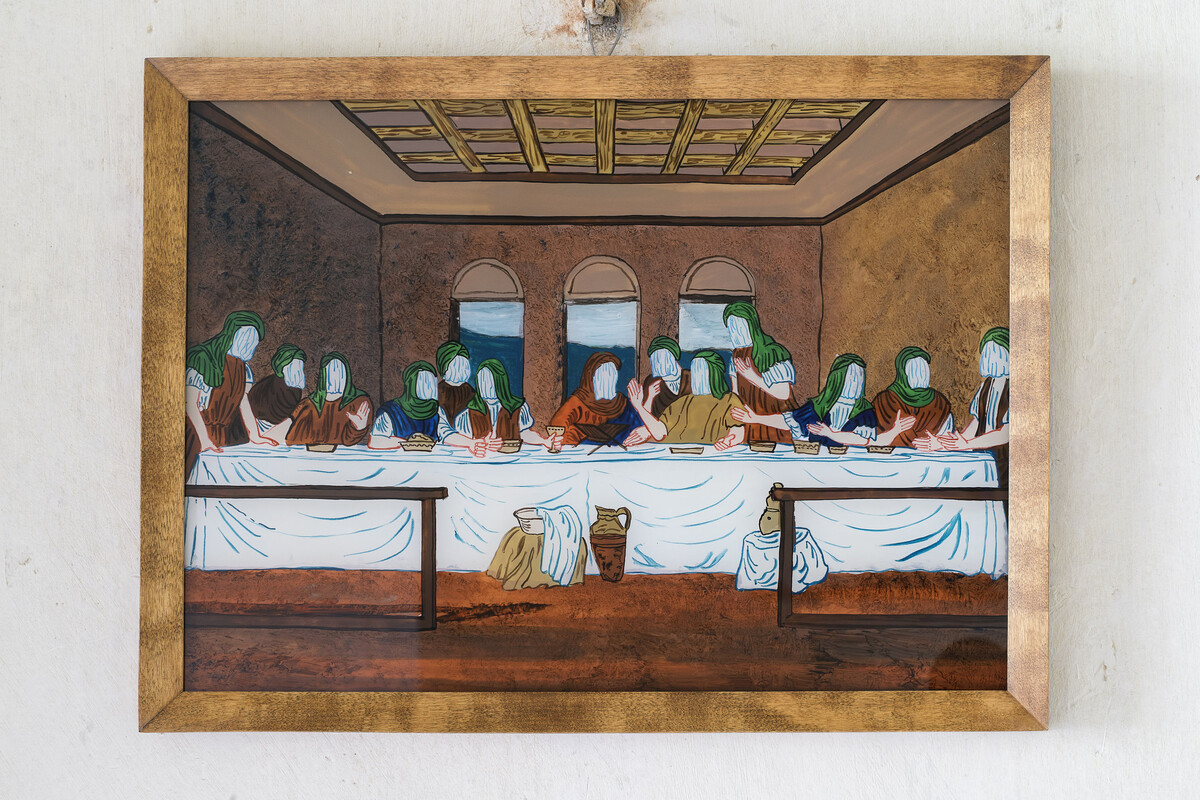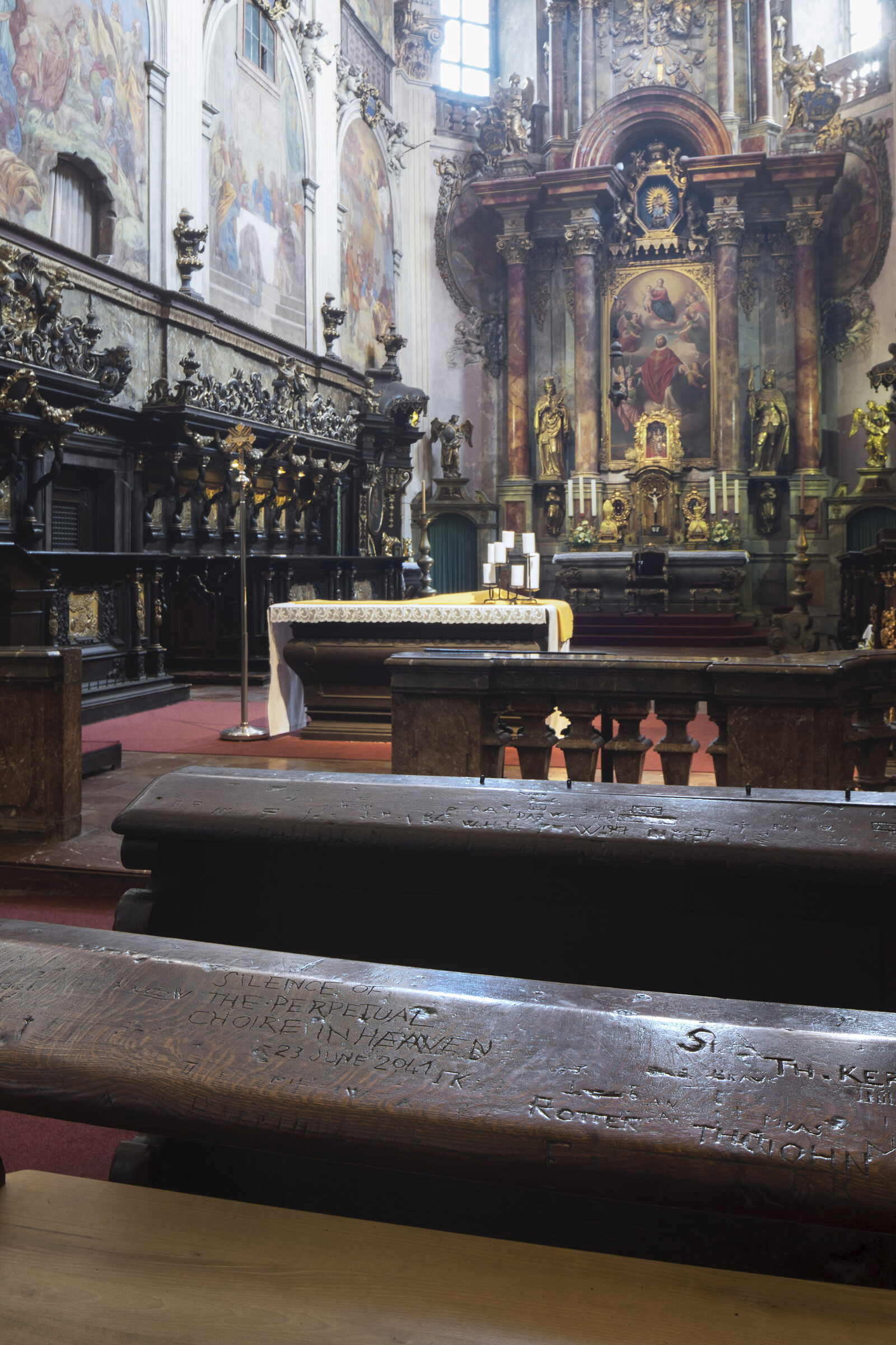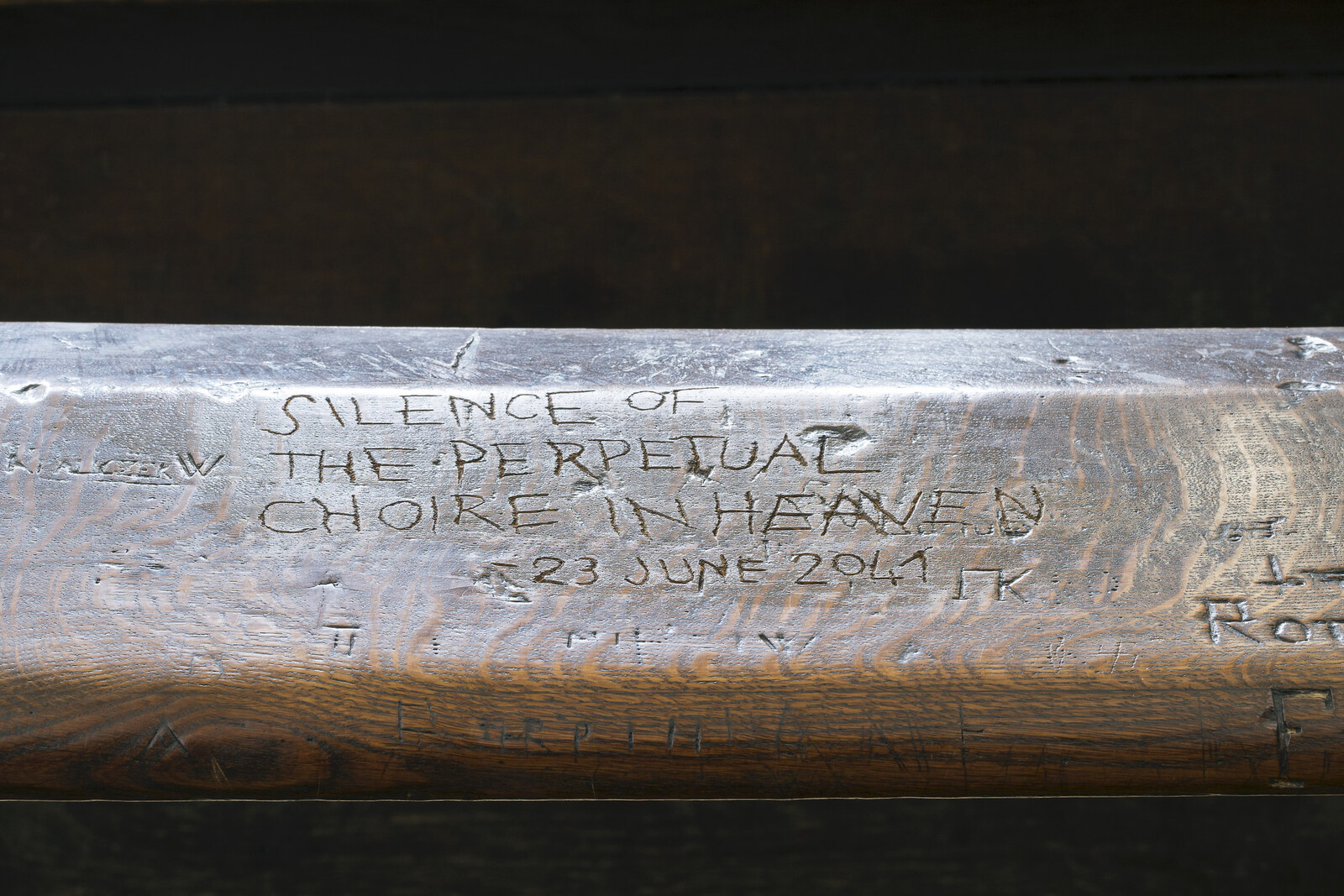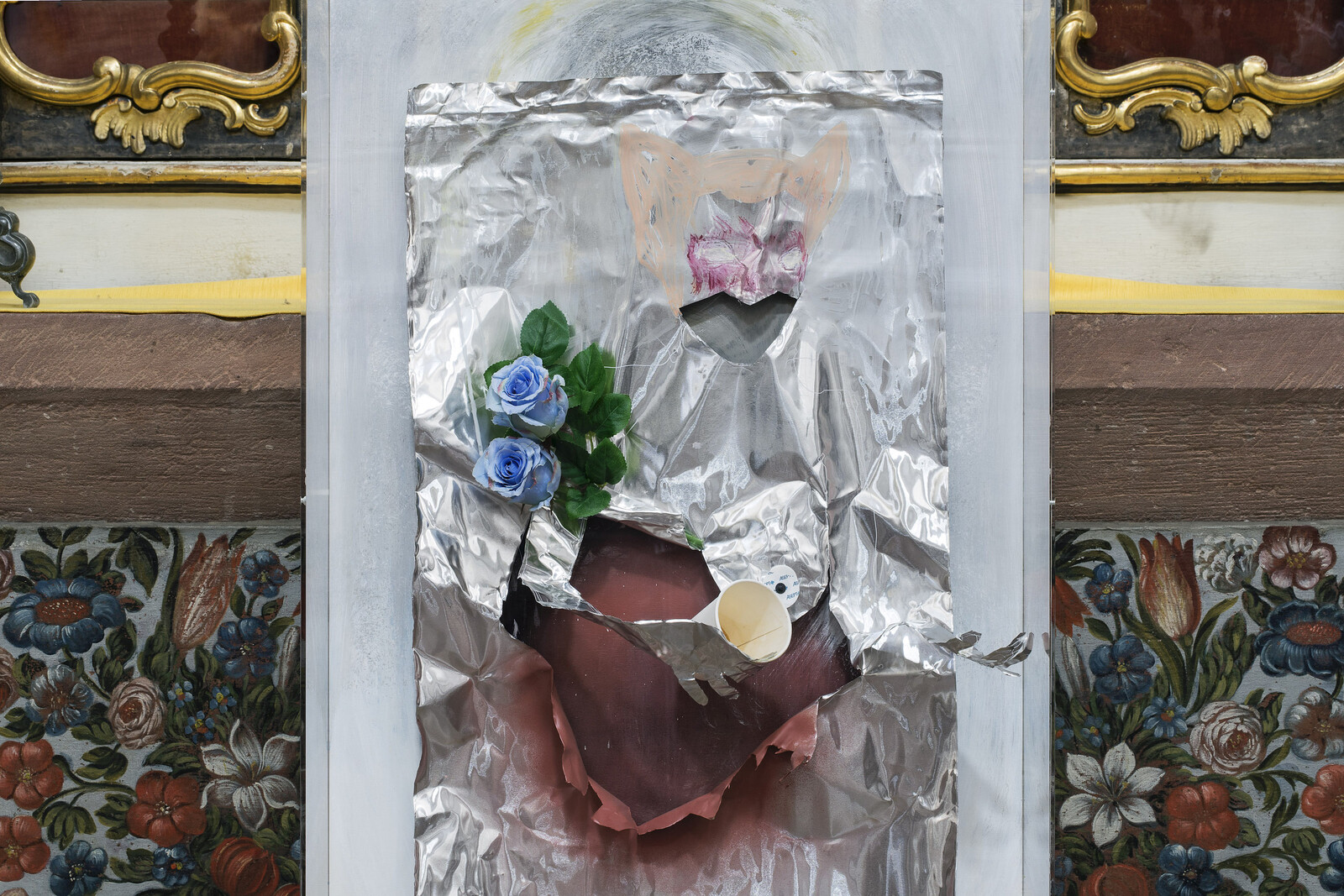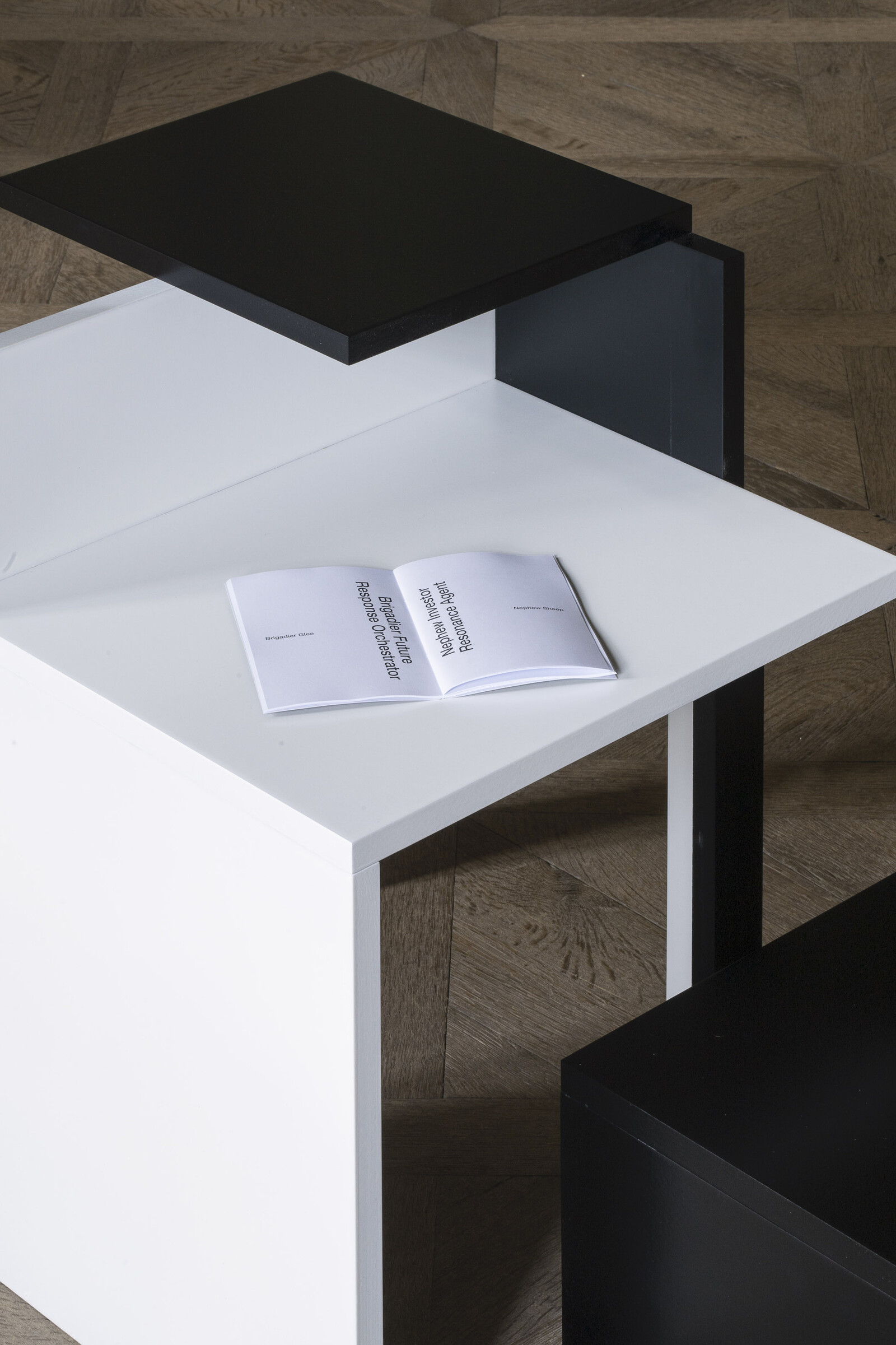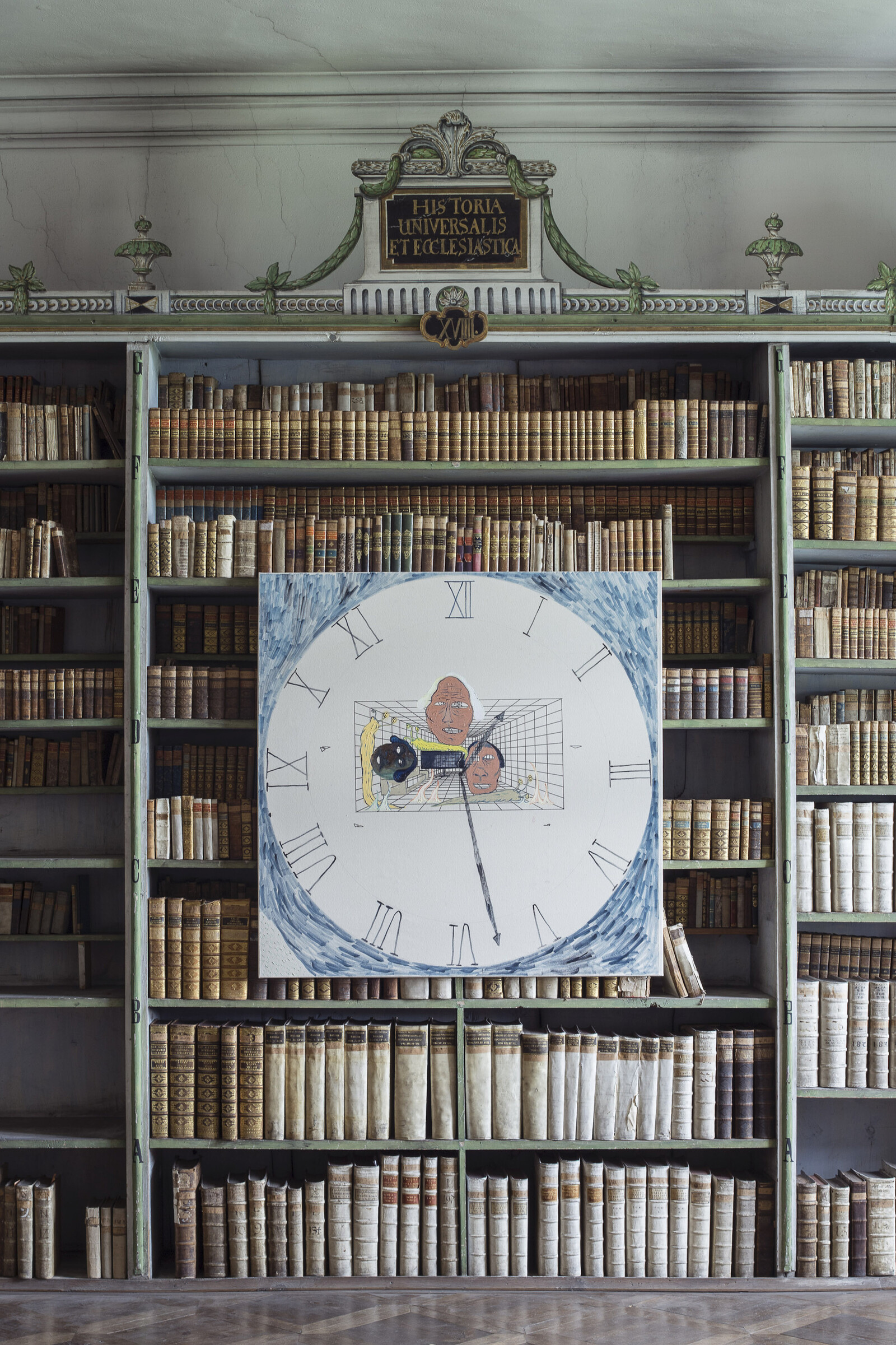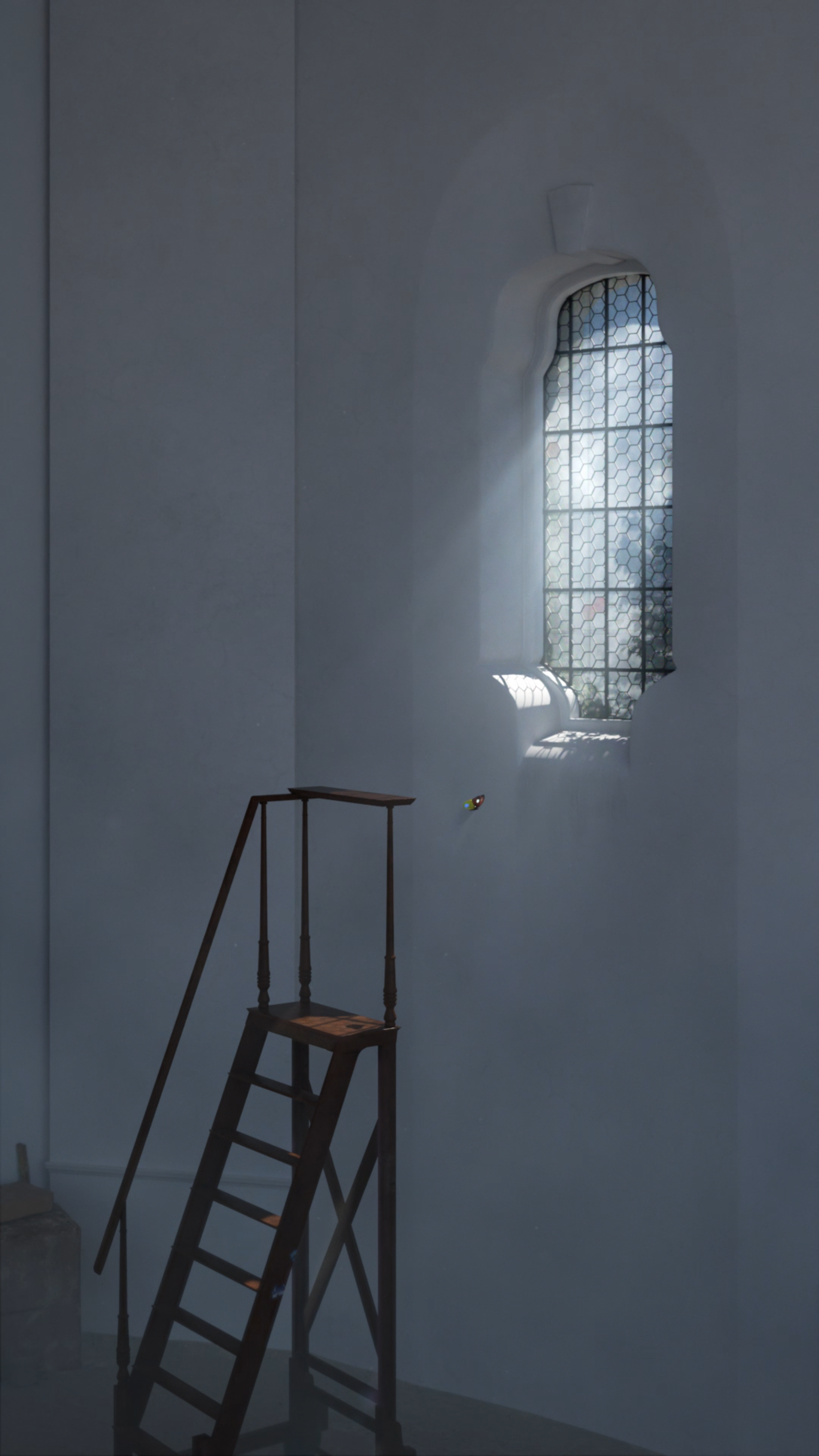Sister Francesca Stanislava Šimuniová gave a speech at the opening of “Ora et lege” (“pray and read”). I can only speculate about what the nun said—she was speaking in Czech—but her presence, along with that of Sister Lucia Wagner, reflected this exhibition’s point of departure: It is not critical of or in opposition to religious belief; rather, curator Monika Čejková proposes contemporary art as a way to bring values of the Benedictine Order into a secular positioning, namely that of the “holy reading” ritual. The six participating artists—Ed Atkins, Kamilla Bischof, Jesse Darling, Liam Gillick, Martin Kohout, Florian Meisenberg, and the collective Slavs and Tatars—have responded to the site through artworks and texts, reflecting the Benedictine daily practice of lectio, meditatio, and oratio (reading, meditation, and prayer).
Entering St. Adalbert’s Church, Baroque frescos and architectural elements juxtapose Gothic wooden pews covered with graffitied inscriptions of Czech and German names, along with the occasional phrase.1 These markings were likely made by students at the grammar school that operated within the monastery from 1624 through to 1939—all but one, that is. On the second pew in the row, an uncannily new engraving reads “silence of the perpetual choire in heaven, 23 June 2041.” To the right, in the recessed chapel of Saint Clement, a Perspex box encases a figure fashioned from aluminum and wood, its face covered by a pink, spray-painted Batman-shaped mask. Its hands are extended, one holding a coffee-stained paper cup and the other a small, dried flower. These two works—Untitled Anonymous (2021) by Atkins and Our Lady Batman of the Empty Center (Temporary Relief) from 2018 by Darling—are in dialog. The digital avatars typical of Atkins’s work are here replaced by religious icons while, more potently, Darling’s shrine invites questions of value (What do we worship? What do we tithe or, conversely, beg for?) and gender (Who is Batman? What does Saint Clement represent in this context?). Such topics are further explored in a booklet placed on the pews that reproduces Darling’s correspondence with Reverend Dr. Christina Beardsley, who underwent gender transition while remaining a member of the church.2 In one email, Darling wrote: “In general I prefer to think of Jesus as a neurodivergent bisexual rebel than as Mr. Caucasian Piety of the year.”
The artist’s exploration of gender is reflected in three paintings by Bischof, two of which are displayed in the adjoining sacristy, where (male only) priests prepare for Mass. Each painting is mounted atop a pink-hued dollhouse and is tied to a wooden frame with brightly colored satin ribbons. In Geschichten aus dem Gardinenwald (Tales from the Curtain Woods) (2020), fading figures and blended brushstrokes combine to create a surreal vision of what could be a dream or a nightmare, a magic ritual or a bedtime story. The ambiguous scene is underscored by a wolfish animal toward the bottom of the canvas which, with its head tilted upward, threatens to eat the rendered scene alive. Seen in such a specific place, Bischof’s works allude to a new House of God in which existing hierarchies and binaries are destabilized, and anyone—of any gender—can take center stage.
Upstairs in the refectory, a copy of the Shroud of Turin is displayed in a brightly lit vitrine spanning the length of the room’s back wall. Gillick’s work, titled Three Borrowed Gray Rotations (2021), applies the idea of a “sacred copy” to modern design: three appropriations of Eileen Gray’s iconic wooden side table De Stijl (1922) stand in the center of the room, each paired with a child-size stool designed by Gillick. One can sit at these miniature desks and read Between Fable and Parable (2021)—a new limited-edition book by the artist in which he humorously transposes Aesop’s fables into a corporate context, itself a nod to John Baldessari’s Ingres and Other Parables (1972)—in this former dining room, where conversation was prohibited and scripture was read aloud from a pulpit.
In the mortuary chapel, Slavs and Tatars present a new series of four reverse glass paintings that respond to the similarities found between Catholicism and Shiite Islam. Communion (Ahl al-Apostles) (2021), for example, is a reinterpretation of da Vinci’s The Last Supper in which the figures wear hijabs and their faces are veiled; the work no longer alludes to only the 12 apostles but also the 12 imams. In the library, Kohout and Miesenberg meditate on the role of technology in relation to knowledge and world building—Kohout through a CGI-rendered video and Miesenberg through two paintings executed by an automated machine.
Despite these artists’ diverse interests, their works come together in their questioning of knowledge and unconditional faith, of what we accept or even worship as status quos. But through the combination of lectio and meditatio, as these works and their specific context in this exhibition encourage, the world might be seen anew. “Ora et lege” transforms the monastery into a place to read visual and literal texts that themselves pray for alternative understandings of (secular) societal structures and gods, whatever they may be.
In 1306, a fire destroyed much of the original monastery. The original pews, as well as the Church of the Virgin Mary, survived, but St. Adalbert’s Church was reconstructed in a Baroque style from 1727 to 1722.
This is an extended version of correspondence first published to accompany Darling’s exhibition “The Ballad of Saint Jerome” which opened at London’s Tate Britain in 2018.
